- The Benefits of Growing Strawberries in Containers
- 1. Versatility
- 2. Easy Maintenance
- 3. Pest Control
- 4. Extend the Growing Season
- 5. Better Disease Control
- 6. Increased Yield
- 7. Aesthetically Pleasing
- 8. Easy Harvesting
- 9. Great for Beginners
- 10. Sustainable Gardening
- Easy Maintenance and Accessibility
- Space Saving Solution
- Ideal for Small Gardens or Balconies
- Versatility for Any Climate
- Control Over Soil and Water Conditions
- Prevention of Pests and Diseases
- 1. Regular Inspection
- 2. Proper Sanitation
- 3. Crop Rotation
- 4. Companion Planting
- 5. Organic Pest Control
- 6. Disease-resistant Varieties
- 7. Proper Watering Techniques
- Extended Growing Season
- Increased Yield of Delicious Strawberries
- Optimal Growing Conditions
- Improved Disease Management
- Enhanced Watering and Fertilization
- Extended Growing Season
- Question-answer:
- What are the advantages of growing strawberries in containers?
- What types of containers can be used for growing strawberries?
- What kind of soil is best for growing strawberries in containers?
- How often should container-grown strawberries be watered?
- Can strawberries be grown in containers indoors?
- Are there any special considerations for fertilizing container-grown strawberries?
- Video: Method of growing strawberries that the whole world does not know || How to grow a strawberry plant
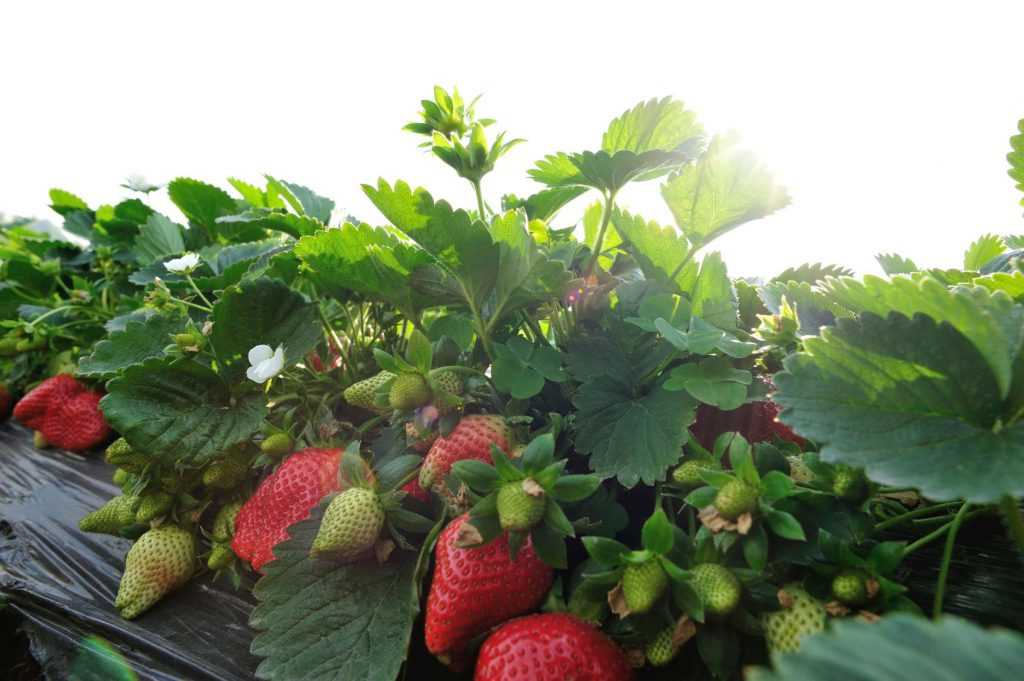
Growing strawberries in containers is becoming increasingly popular among gardeners, and for good reason. This method offers numerous advantages over traditional strawberry cultivation in beds or garden plots. With container gardening, you have more control over the growing conditions, can easily move the plants to different locations, and can prevent soil-borne diseases that often affect strawberries. Plus, it’s a great option for those with limited space or no access to a traditional garden.
One of the main advantages of growing strawberries in containers is the ability to control the soil conditions. Strawberries prefer well-draining soil, and containers allow you to choose the right mix for optimal growth. You can use a mix of peat moss, perlite, and compost to create the perfect balance of moisture retention and aeration. Additionally, you can adjust the soil pH to suit the needs of the strawberries, ensuring they have the ideal environment for healthy growth.
The portability of container-grown strawberries is another major benefit. Containers can easily be moved to take advantage of the best sunlight throughout the day, allowing the plants to receive the optimum amount of sunlight for photosynthesis. This flexibility is especially useful in areas with limited sun exposure or fluctuating weather conditions. You can also bring the containers indoors during extreme weather or to protect the plants from pests and diseases.
Finally, growing strawberries in containers helps prevent soil-borne diseases that commonly affect strawberries. Plants grown in containers are isolated from the soil, reducing the risk of fungal infections and other diseases. This allows for cleaner and healthier plants, which often translates to higher yields of delicious strawberries. Additionally, growing strawberries in containers makes it easier to spot and address any pest or disease issues before they spread to the rest of your garden.
The Benefits of Growing Strawberries in Containers
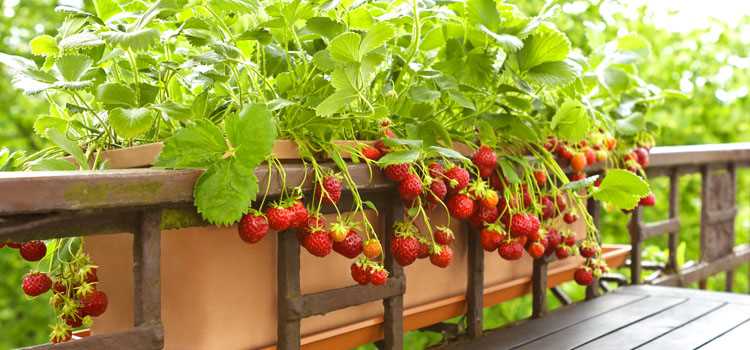

1. Versatility
Growing strawberries in containers offers great versatility as they can be placed in any location, including small spaces like balconies, patios, or even windowsills. This makes it convenient for anyone, regardless of the size of their outdoor space, to enjoy delicious homegrown strawberries.
2. Easy Maintenance
Container gardening makes it easier to maintain and care for the strawberry plants. The containers can be easily moved around to adjust to the sunlight requirements and provide optimal growing conditions. Additionally, using containers can help prevent weeds from taking over the strawberry bed, reducing the need for constant weeding.
3. Pest Control
Growing strawberries in containers can help minimize pest problems. By elevating the plants, it becomes harder for pests to access them. Additionally, containers provide a physical barrier that can prevent crawling insects from reaching the plants.
4. Extend the Growing Season
Containers can be brought indoors or placed in a greenhouse during unfavorable weather conditions, allowing the strawberry plants to continue growing and producing fruits for a longer period. This can be particularly beneficial in colder climates where the growing season may be shorter.
5. Better Disease Control
Container gardening can help reduce the risk of fungal diseases and soil-borne pathogens that can affect strawberry plants. By using new potting soil and clean containers, you can minimize the chances of these diseases spreading. Additionally, this method allows for better ventilation, which helps prevent the development of mold and mildew.
6. Increased Yield
When growing strawberries in containers, you can control the soil quality and provide optimal conditions for the plants. This can result in increased yields compared to growing strawberries in garden beds, where soil quality may vary. Additionally, container-grown strawberries can focus their energy on fruit production rather than competing with weeds for nutrients and water.
7. Aesthetically Pleasing
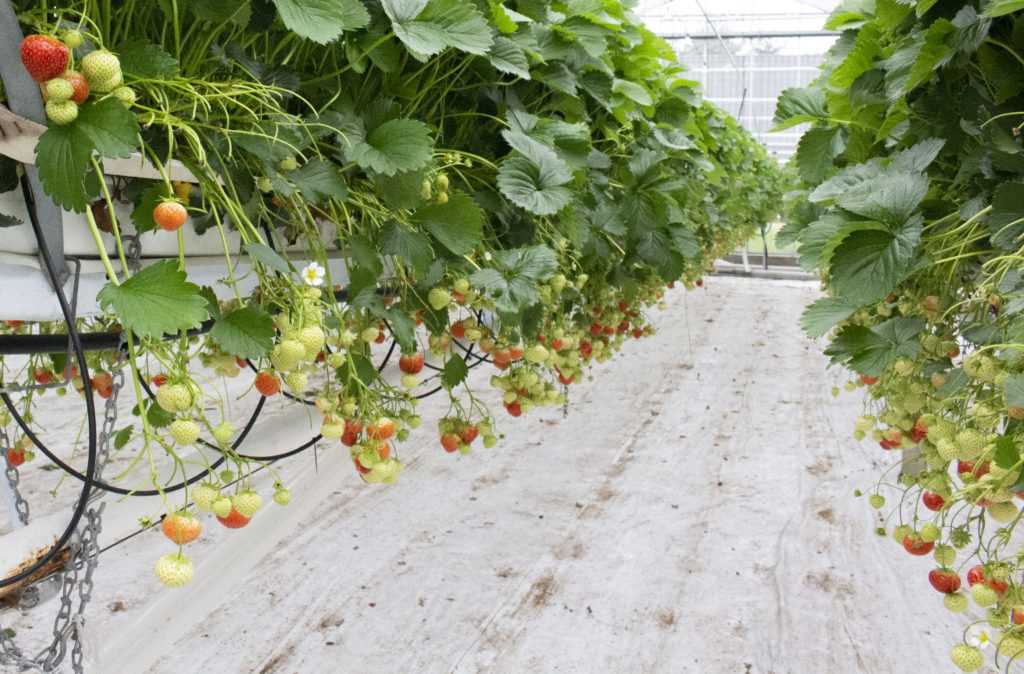

Growing strawberries in containers can add beauty to any space. The bright red berries dangle from the container, and the lush green foliage creates an attractive display. This can enhance the overall appeal of your outdoor or indoor space.
8. Easy Harvesting
Harvesting strawberries from containers is much easier compared to traditional gardening methods. The plants are at a convenient height, making it easy to reach the ripe fruits without bending or stooping. This can save time and effort during the harvesting process.
9. Great for Beginners
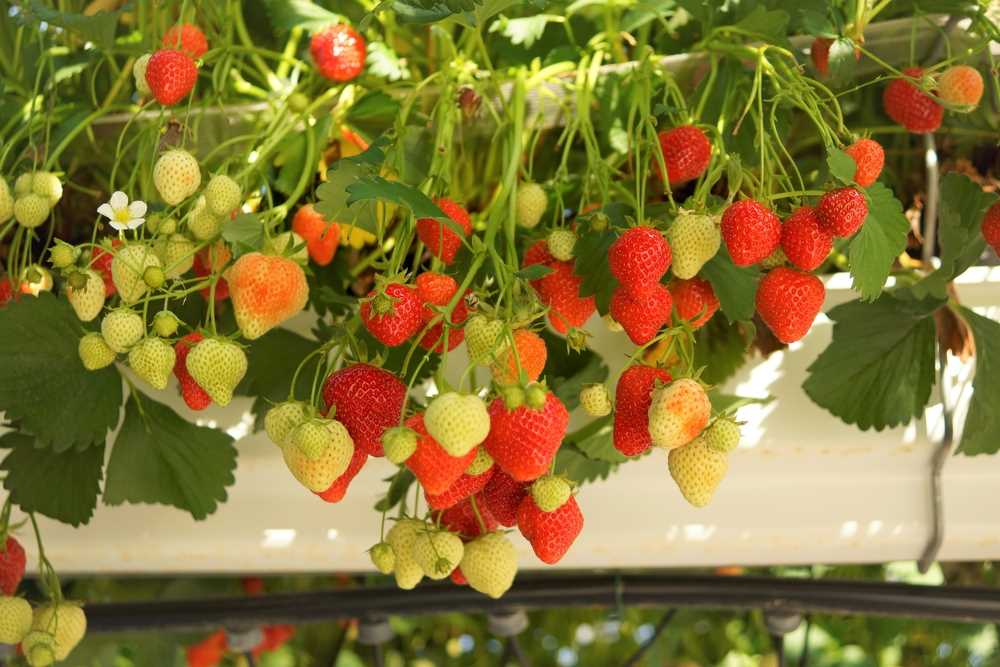

Container gardening is an excellent option for beginners who may not have much gardening experience. It provides a controlled environment and requires less maintenance compared to gardening in open soil. It also allows beginners to start small and gradually expand their gardening skills.
10. Sustainable Gardening
Lastly, growing strawberries in containers promotes sustainable gardening practices. The use of containers reduces the need for excessive water consumption, helps minimize the use of pesticides and herbicides, and allows for efficient use of space.
In conclusion, growing strawberries in containers offers numerous benefits, including versatility, easy maintenance, better pest control, extended growing season, disease control, increased yield, aesthetic appeal, easy harvesting, suitability for beginners, and sustainable practices. This method allows anyone, regardless of their gardening experience, to enjoy the fresh and delicious taste of homegrown strawberries.
Easy Maintenance and Accessibility
- Growing strawberries in containers offers the advantage of easy maintenance. By planting strawberries in containers, you have complete control over the soil, water, and nutrients the plants receive. This makes it easier to provide optimal growing conditions for the strawberries.
- Container-grown strawberries also offer better accessibility. The compact size of containers allows you to place them in convenient locations, such as patios, balconies, or even indoors. This makes it easier to monitor the plants, harvest the fruit, and perform necessary care tasks like watering and fertilizing.
- Maintaining container-grown strawberries is relatively simple. Regular watering, especially during dry periods, is essential to keep the plants hydrated. Fertilizing with a balanced fertilizer every few weeks can help promote vigorous growth and fruit production. Remove any weeds or pests that may appear in the containers to ensure the plants stay healthy.
- Additionally, container-grown strawberries are less susceptible to soil-borne diseases and pests. Diseases like strawberry root rot and pests like nematodes can be a problem in traditional garden beds, but growing strawberries in containers minimizes these risks.
In conclusion, the easy maintenance and accessibility of growing strawberries in containers makes it a practical and convenient option for both experienced gardeners and beginners. With proper care, you can enjoy a bountiful harvest of delicious strawberries right at your fingertips.
Space Saving Solution
- Growing strawberries in containers is a great space-saving solution for those who have limited gardening space.
- Containers can be placed in small areas such as balconies, patios, or even windowsills.
- This method allows urban dwellers or people with small yards to enjoy the benefits of growing strawberries without needing a large garden.
- Containers can be stacked or arranged vertically, making the most efficient use of available space.
- Additionally, containers can be easily moved around to take advantage of sunlight or to protect the plants from extreme weather conditions.
- By using containers, you can grow strawberries in any location, regardless of the size of your outdoor space.
Ideal for Small Gardens or Balconies
Growing strawberries in containers is the perfect solution for those with limited gardening space. Whether you have a small garden or a balcony, you can easily cultivate strawberries without the need for a large patch of land.
By using containers, you can make the most of your available space and grow strawberries in a vertical manner. This means you can stack the containers on top of each other, utilizing the height of your space without taking up too much floor space. It’s an efficient way to maximize your strawberry yield.
Containers also allow you to control the environment in which the strawberries grow. You can easily move the containers around to find the best sunlight exposure and protect the plants from extreme weather conditions.
Another advantage of growing strawberries in containers is that it allows you to avoid many common gardening problems. By planting in sterile potting mix, you can minimize the risks of soil-borne diseases and pests. With the right care and maintenance, you can ensure that your strawberries stay healthy and produce a bountiful harvest.
In addition, containers provide better drainage for the plants, preventing root rot and waterlogging. This is especially beneficial for areas with heavy rainfall or poor soil drainage.
Growing strawberries in containers is not only a practical solution but also offers aesthetic appeal. Containers can be easily customized and decorated to match your outdoor area or balcony. You can choose from a wide variety of container materials, sizes, and designs to create a visually pleasing strawberry garden.
Overall, growing strawberries in containers is a convenient and effective method for individuals with small gardens or balconies. It allows you to enjoy homegrown strawberries without the need for a large plot of land and provides flexibility in terms of location and plant care. So, why not give it a try and start growing your own delicious strawberries today!
Versatility for Any Climate
One of the greatest advantages of growing strawberries in containers is their versatility for any climate. Whether you live in a hot and dry climate or a cold and snowy region, you can still enjoy the harvest of fresh strawberries by growing them in containers.
Containers provide a controlled environment for strawberries, allowing you to adjust the temperature, moisture levels, and sun exposure according to the needs of the plants. This makes it possible to grow strawberries year-round, regardless of the external climate.
In hot climates, container-grown strawberries can be placed in a partially shaded area to protect them from extreme heat. The containers can also be moved to a cooler spot during heatwaves or heatwaves.
On the other hand, in cold climates, containers can be brought indoors or into a greenhouse during winter to protect the plants from freezing temperatures. This allows you to extend the growing season and have strawberries even in the colder months.
Furthermore, containers provide excellent drainage, preventing waterlogged soil that could harm the strawberry plants. This is particularly beneficial in regions with heavy rainfall or excessive moisture, as it helps prevent root rot and other fungal diseases.
The versatility of growing strawberries in containers also extends to urban environments where space is limited. They can be grown on balconies, rooftops, or even indoors near a sunny window, making it possible for anyone to enjoy the fresh taste of homegrown strawberries, regardless of their living situation.
Control Over Soil and Water Conditions
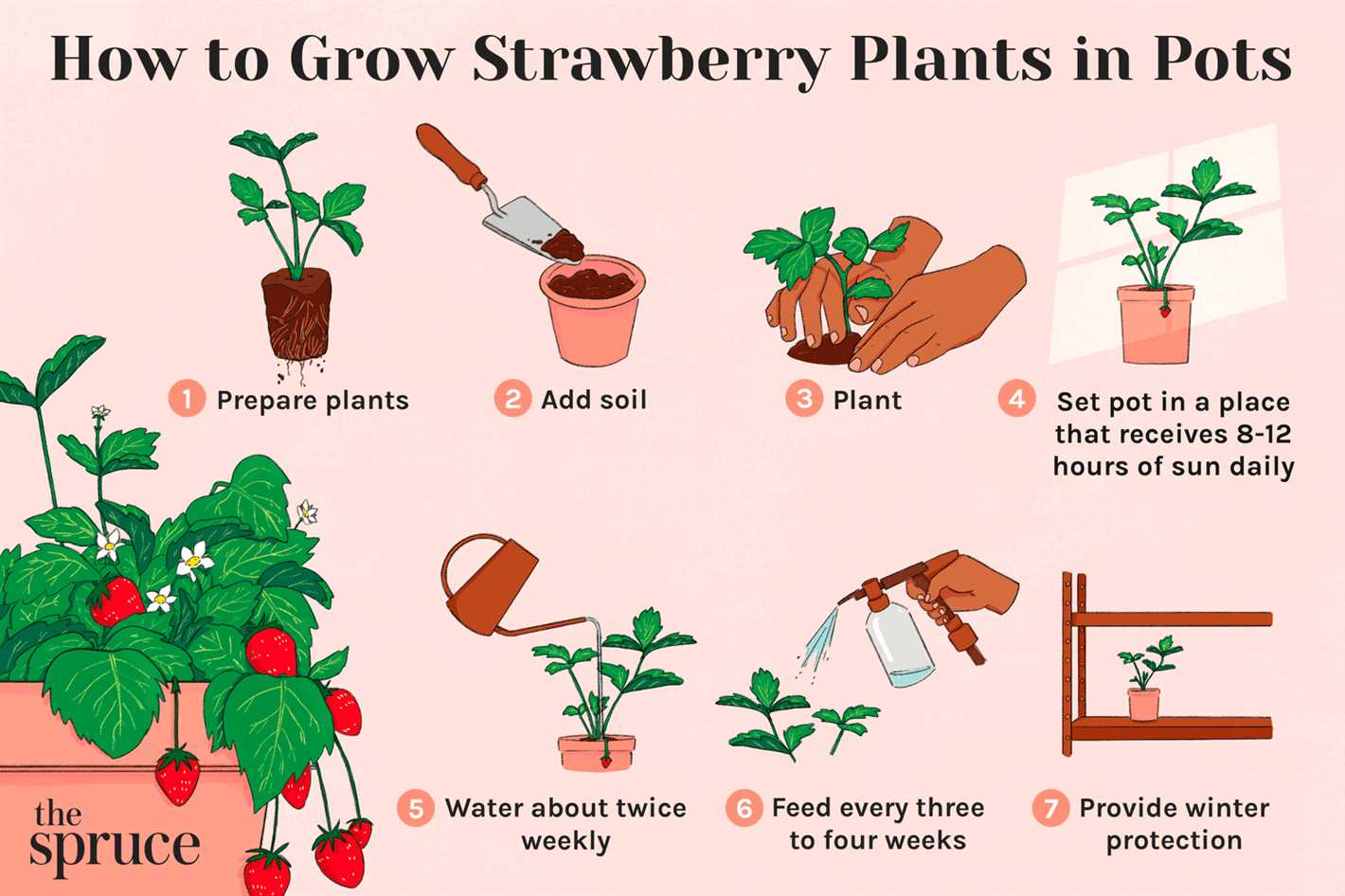

One of the major advantages of growing strawberries in containers is the ability to have complete control over the soil and water conditions. This can be especially beneficial for those who live in areas with poor soil quality or limited access to water.
By using containers, you can choose the specific type of soil that your strawberries need to thrive. Strawberries prefer well-draining soil that is rich in organic matter. You can create the perfect soil mix by combining equal parts of compost, peat moss, and perlite or vermiculite. This ensures that your strawberry plants have the right balance of nutrients and moisture.
In addition to controlling the soil composition, growing strawberries in containers also allows you to regulate the water supply. Strawberries require regular watering, but it is important to avoid overwatering, as this can lead to root rot. With containers, you can easily monitor the moisture levels and adjust the watering accordingly.
Another benefit of growing strawberries in containers is the ability to move them around to different locations. This is particularly useful if you have a small outdoor space or if you want to protect your plants from extreme weather conditions. You can place the containers in the sunniest spot during the day and move them to a more sheltered area at night or during heavy rain.
Overall, growing strawberries in containers allows for greater control over the soil and water conditions, making it easier to create the optimal growing environment for your plants.
Prevention of Pests and Diseases
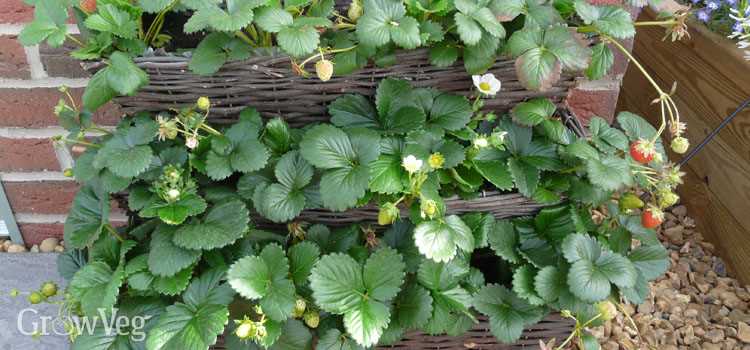

1. Regular Inspection
Regularly inspecting your strawberry plants is crucial in preventing and controlling pests and diseases. Look out for any signs of pest infestation or disease symptoms on both the leaves and fruits. Early detection allows you to take immediate action to minimize damage.
2. Proper Sanitation
Maintaining good sanitation practices is essential to prevent the spread of pests and diseases. Remove any fallen leaves or debris around the plants as they can harbor pests and pathogens. Clean your containers and tools before and after each growing season to eliminate any potential sources of contamination.
3. Crop Rotation
Practicing crop rotation is beneficial in reducing pest and disease problems. Avoid planting strawberries or any other members of the same plant family in the same container year after year. Rotating your crops helps break the lifecycle of pests and pathogens that may have overwintered in the soil.
4. Companion Planting
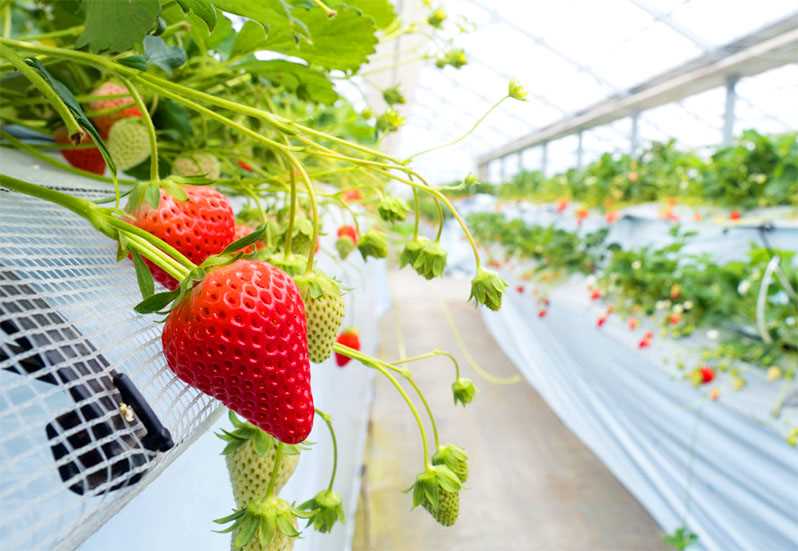

Consider companion planting with beneficial plants that repel pests or attract beneficial insects. Marigolds, basil, and garlic are known to deter pests such as aphids and spider mites. Planting these alongside your strawberries may help to discourage pest infestations.
5. Organic Pest Control
When dealing with pests, opt for organic pest control methods whenever possible. Use natural predators such as ladybugs, lacewings, and predatory mites to control aphids and other harmful insects. Homemade insecticidal soap sprays and neem oil can also be effective against common pests.
6. Disease-resistant Varieties
Choose disease-resistant strawberry varieties for container gardening. These varieties have been bred to withstand common diseases, reducing the chances of your plants getting infected. Look for varieties that are resistant to common diseases such as powdery mildew, verticillium wilt, and gray mold.
7. Proper Watering Techniques
Overwatering can contribute to the development of fungal diseases. To prevent this, water your strawberry plants at the base, avoiding wetting the leaves. Use a well-draining potting mix and ensure that excess water can freely drain out of the container.
| Pests | Diseases |
|---|---|
|
|
Extended Growing Season
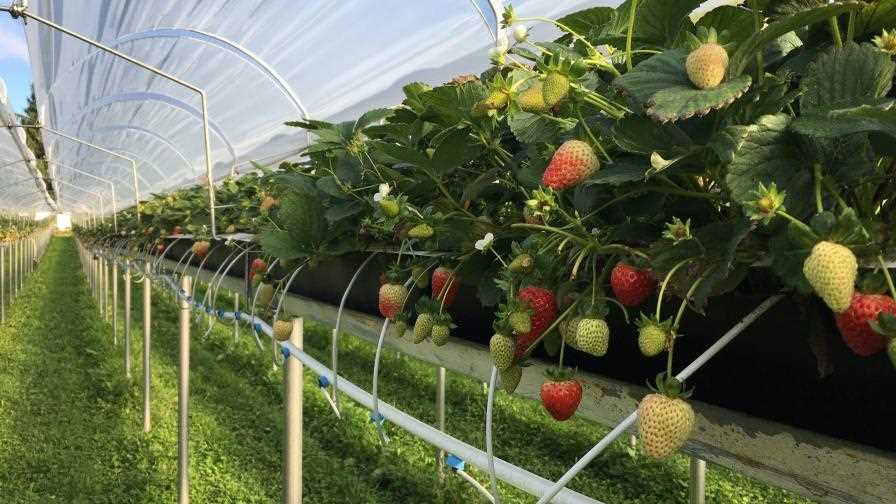

Growing strawberries in containers allows you to extend the growing season and enjoy fresh strawberries for a longer period of time. Here are a few reasons why container-grown strawberries have an extended growing season:
- Portability: Containers can be moved easily, allowing you to follow the sun and place your strawberries in the optimal location for maximum sunlight exposure.
- Temperature control: Containers can be moved indoors during colder months, protecting your plants from frost and allowing them to continue growing.
- Protection from pests: Containers can be placed on elevated surfaces, such as tables or shelves, to prevent pests from reaching your strawberry plants. This reduces the risk of damage and allows your strawberries to thrive.
- Increased control over water and nutrients: Container-grown strawberries allow for precise control over water and nutrient levels. This ensures that your plants are getting just the right amount of moisture and nutrients they need to grow and produce fruit.
By utilizing these advantages of growing strawberries in containers, you can enjoy a longer growing season and harvest fresh strawberries for an extended period of time. Whether you have limited space in your garden or simply want to have strawberries available year-round, container gardening is a great option to consider.
Increased Yield of Delicious Strawberries
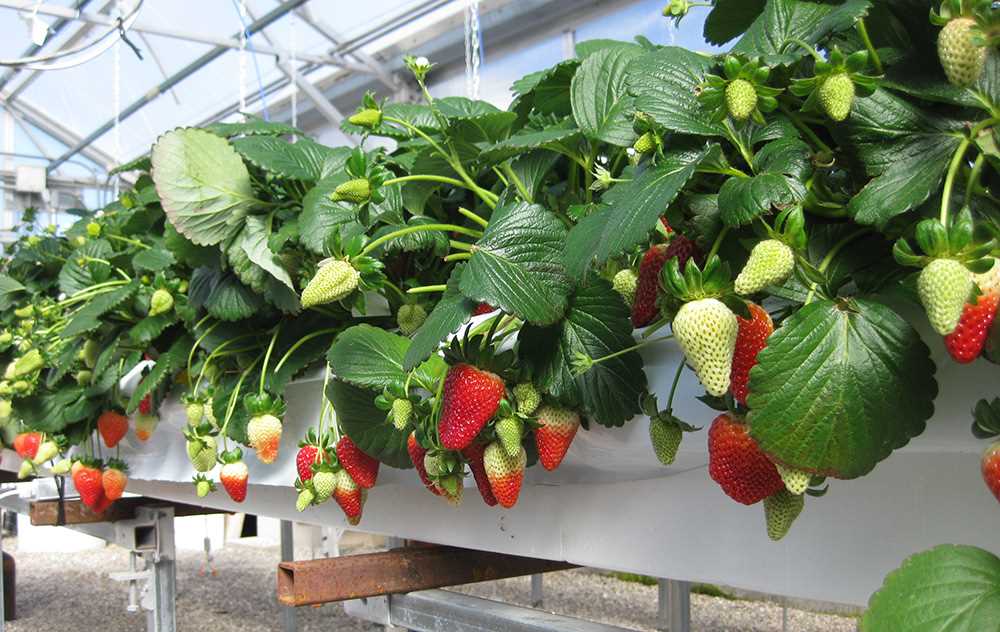

One of the major advantages of growing strawberries in containers is the increased yield of delicious strawberries. When grown in containers, strawberries can be carefully nurtured and managed to maximize their growth potential.
Here are some factors that contribute to the increased yield of delicious strawberries when grown in containers:
Optimal Growing Conditions
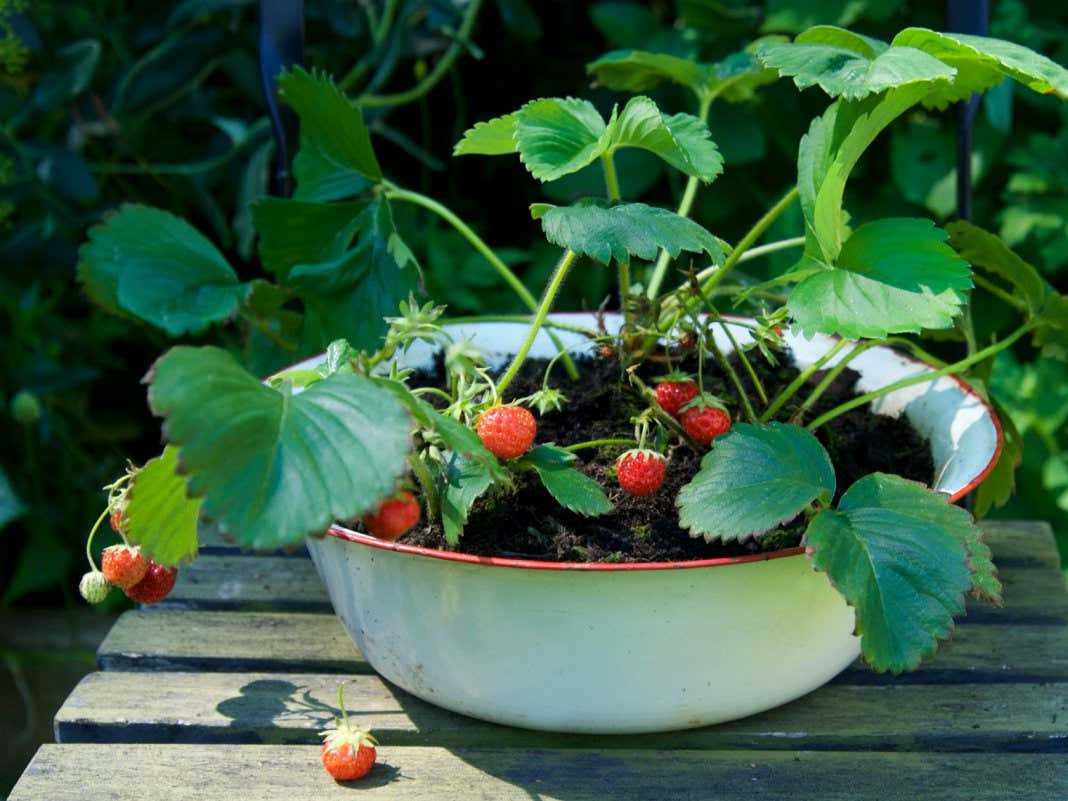

- Containers provide a controlled environment for strawberries, allowing growers to meet their specific needs.
- Soil composition, drainage, and pH levels can be customized to create the perfect growing conditions for strawberries.
- Containers can be moved to take advantage of sunlight and protect the plants from extreme weather conditions.
Improved Disease Management
- Growing strawberries in containers reduces the risk of soil-borne diseases and pests.
- The use of clean potting mix and proper sanitation practices minimizes the chances of disease transmission.
- Containers make it easier to inspect and manage plants, allowing early detection and treatment of any issues.
Enhanced Watering and Fertilization
- In containers, it is easier to regulate the moisture levels and provide adequate watering for the strawberry plants.
- Growers can monitor and adjust the amount of water and nutrients supplied, ensuring optimal growth and fruit development.
- Fertilizers can be applied precisely, targeting the specific needs of the plants.
Extended Growing Season
- With containers, strawberries can be protected from early frost and continue to produce fruit for a longer period.
- Containers allow for the possibility of bringing strawberries indoors during colder months, extending the growing season.
- By controlling the environment, growers can cultivate strawberries year-round, providing a continuous supply of delicious berries.
By taking advantage of these features and actively managing the growth of strawberries in containers, growers can significantly increase their yield of delicious strawberries. This makes container gardening an attractive option for both home gardeners and commercial growers.
Question-answer:
What are the advantages of growing strawberries in containers?
Growing strawberries in containers has several advantages. Firstly, it allows people with limited space, such as those living in apartments or small houses, to still enjoy growing their own strawberries. Secondly, container-grown strawberries are less susceptible to diseases and pests, as the containers can be easily moved and kept in an optimal growing environment. Lastly, containers allow for better control over the growing conditions, such as soil quality and moisture levels.
What types of containers can be used for growing strawberries?
Various types of containers can be used for growing strawberries. Some common options include clay or ceramic pots, hanging baskets, or even special strawberry towers. The containers should have adequate drainage holes to prevent waterlogging and allow excess water to drain. It is also important to choose containers that are large enough to accommodate the mature plant and its root system.
What kind of soil is best for growing strawberries in containers?
The ideal soil for growing strawberries in containers is a rich, well-draining potting mix. It should be loose, friable, and able to hold moisture without becoming waterlogged. A suitable potting mix can be made by combining equal parts of high-quality garden soil, compost, and perlite or vermiculite. The pH level of the soil should be slightly acidic, around 5.5 to 6.5, for optimal strawberry growth.
How often should container-grown strawberries be watered?
Container-grown strawberries should be watered regularly to keep the soil evenly moist. As a general guideline, strawberries in containers require watering every 1 to 2 days, depending on the weather conditions. The key is to avoid both overwatering and underwatering. It is important to monitor the moisture level of the soil and adjust the watering frequency accordingly.
Can strawberries be grown in containers indoors?
Yes, strawberries can be grown in containers indoors, as long as they receive adequate sunlight. Strawberries require at least 6 to 8 hours of direct sunlight per day for optimal growth and fruit production. If natural light is insufficient, artificial grow lights can be used to supplement the lighting. It is also important to ensure proper air circulation and humidity levels to prevent diseases and promote healthy growth.
Are there any special considerations for fertilizing container-grown strawberries?
Container-grown strawberries benefit from regular fertilization to provide them with essential nutrients for growth and fruit production. A balanced, slow-release fertilizer specifically formulated for strawberries or other fruiting plants can be applied according to the manufacturer’s instructions. It is important not to over-fertilize, as this can lead to excessive foliage growth at the expense of fruit production. Regular watering is necessary to prevent the build-up of fertilizer salts in the soil.







